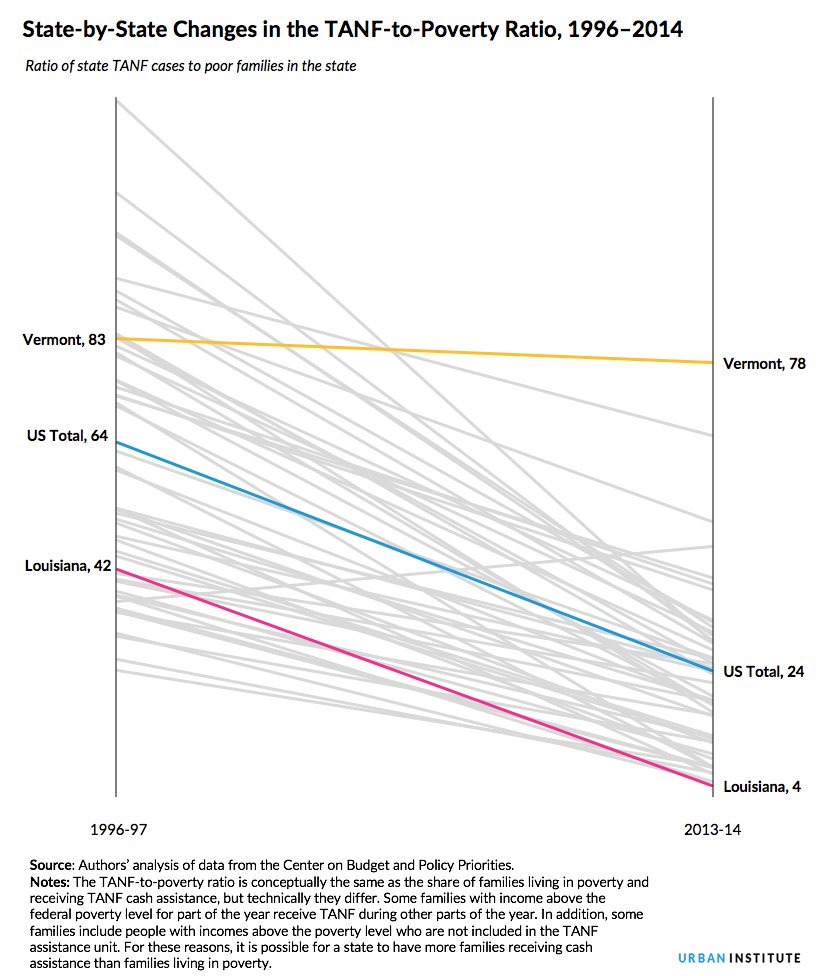This post was originally published here (Urban Institute Research)
The president’s proposed budget includes massive cuts to the social safety net, raising questions and concerns about what might happen to families in need. Among the cuts includes a decrease of about $191 billion from the Supplemental Nutrition Assistance Program (SNAP, also known as food stamps) over the next 10 years. It requires states to ultimately pay 25 percent of SNAP benefits, which are currently covered by the federal government, and gives states the flexibility to reduce benefit levels.
Requiring states to cover a larger share of safety net programs is a key part of the budget reductions. When the federal share of spending shrinks, state funding must increase if states are to continue meeting the level of need in their state.
Twenty years of experience after welfare reform offers lessons about what can happen under similar circumstances. Welfare reform legislation in 1996 created the Temporary Assistance for Needy Families (TANF) block grant, which gave states fixed funding amounts and the flexibility to determine many of their own rules. While the block grant came with unique challenges, general lessons from the past 20 years of TANF show that when states control benefit levels there can be increased diversity in spending across states – and disparate effects for racial minorities.
One key effect is that today fewer families in poverty receive assistance than before welfare reform. Only 24 families for every 100 families in poverty receive aid, compared with 64 for every 100 families receiving aid in 1996. All but one state serves fewer families in need than they did 20 years ago.
Moreover, because of state flexibility in administering their programs, a family in poverty may have a very different experience with the safety net depending on where they live. Vermont has the highest TANF assistance–to-poverty ratio, serving over 60 out of 100 families in poverty. Louisiana has the lowest rate, serving fewer than 5 out of 100 families in poverty.










